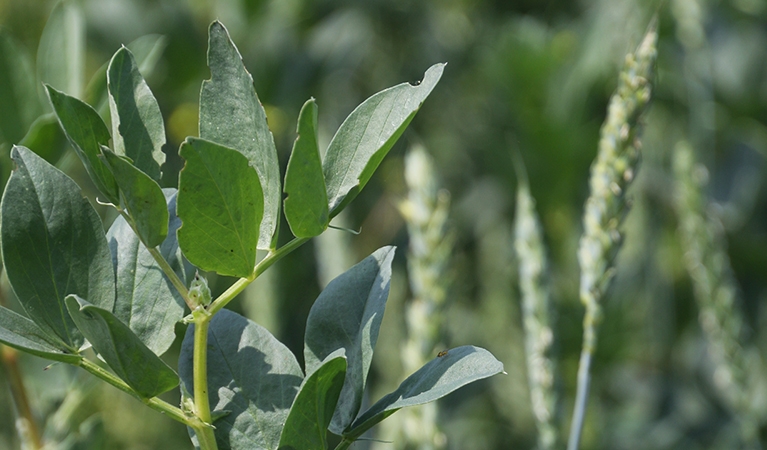
Compared to sole crops, intercropping—especially of legumes and cereals—has great potential to improve crop yield and resource use efficiency, and can provide many other ecosystem services. However, the beneficial effects of intercrops are often greatly dependent on the end use as well as the specific species and genotypes being co-cultivated. In addition, intercropping imposes added complexity at different levels of the supply chain. While the need for developing crop genotypes for intercropping has long been recognized, most cultivars on the market are optimized for sole cropping and may not necessarily perform well in intercrops. This paper aims to place breeding targets for intercrop-adapted genotypes in a supply chain perspective. Three case studies of legumes and cereals intercropped for human consumption are used to identify desirable intercrop traits for actors across the supply chains, many of which are not targeted by traditional breeding for sole crops, including certain seed attributes, and some of which do not fit traditional breeding schemes, such as breeding for synchronized maturity and species synergies. Incorporating these traits into intercrop breeding could significantly reduce complexity along the supply chain. It is concluded that the widespread adoption and integration of intercrops will only be successful through the inclusion and collaboration of all supply chain actors, the application of breeding approaches that take into account the complexity of intercrop supply chains, and the implementation of diversification strategies in every process from field to fork.
Kiær LP, Weedon OD, Bedoussac L, Bickler C, Finckh MR, Haug B, Iannetta PPM, Raaphorst-Travaille G, Weih M, Karley A J (2022) Supply Chain Perspectives on Breeding for Legume–Cereal Intercrops Frontiers in Plant Science (Volume 13) https://doi.org/10.3389/fpls.2022.84463